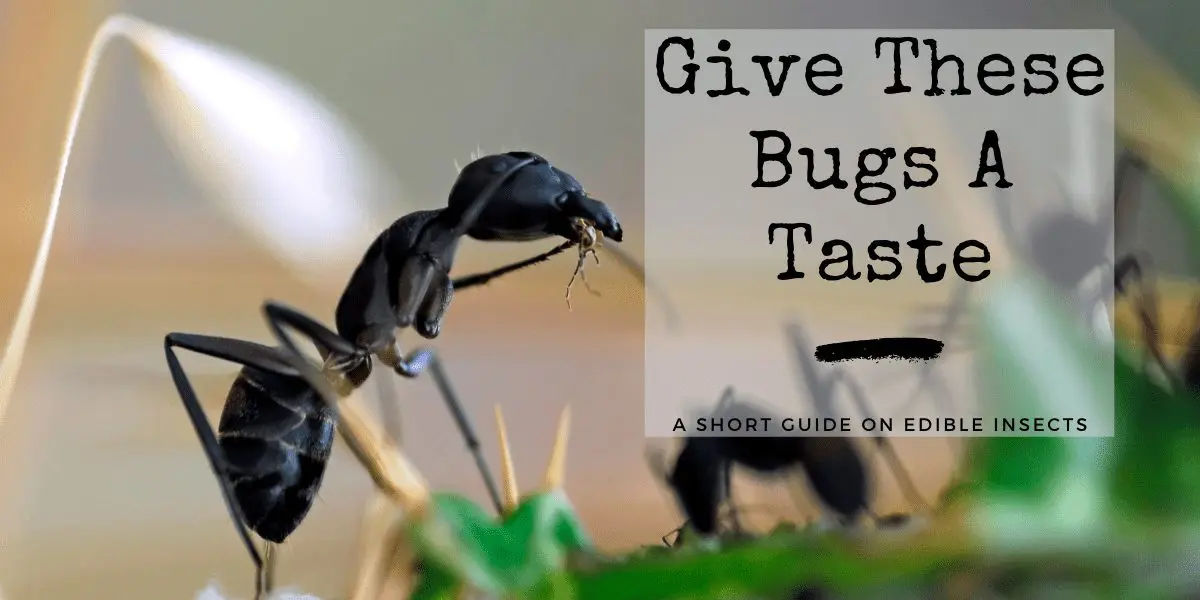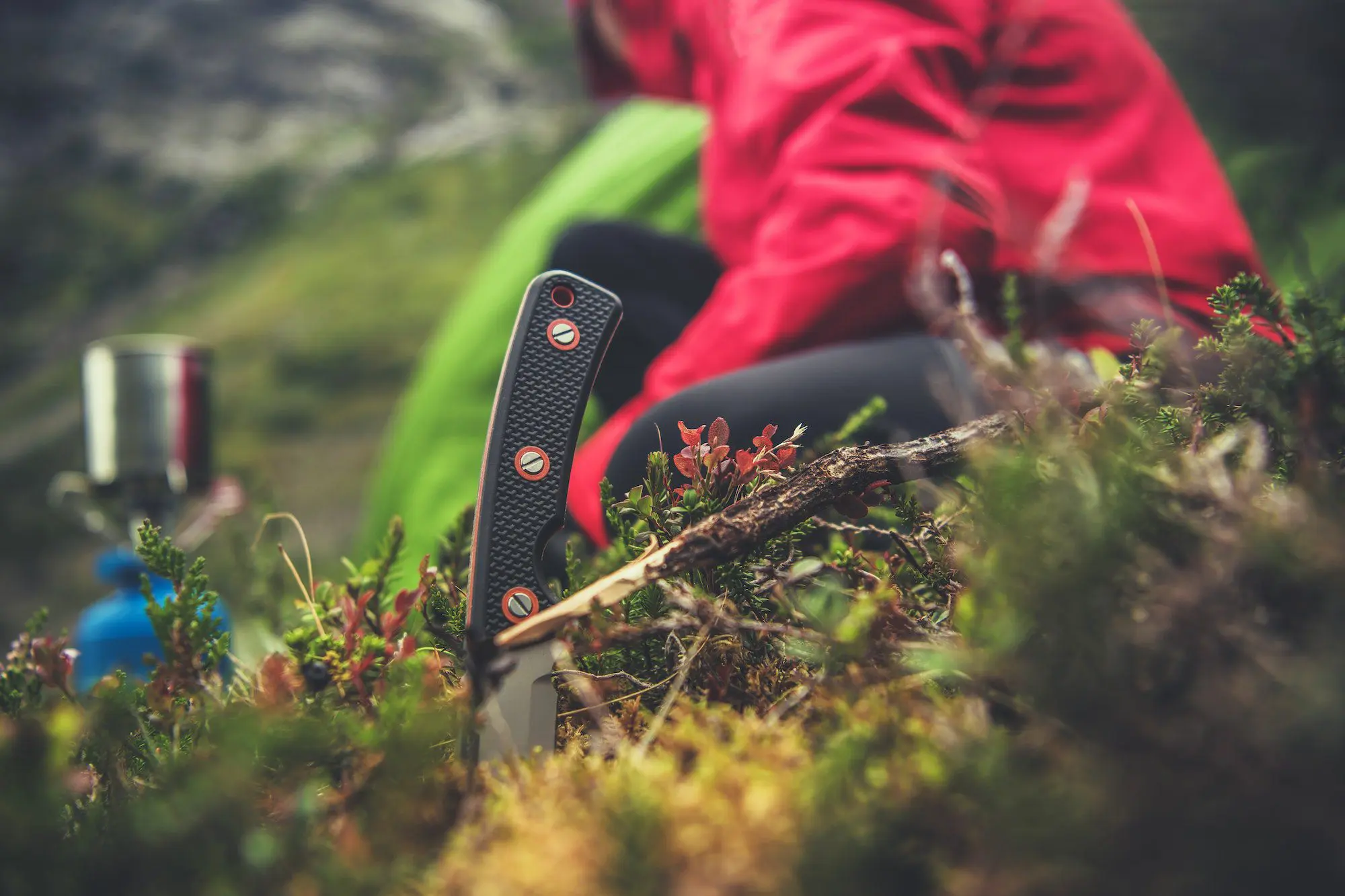When most of us think of insects we don’t think ‘Food’, but you may be surprised to learn that many of them are just that. Edible Insects are an excellent food source. In fact, while American’s typically have an aversion to eating the little bugs many countries around the world eat one form of insect or another quite regularly. In fact, some of these little pests are even considered delicacies in various cultures.
While I don’t expect or even care to convert you to edible bugs loving connoisseurs I do hope to at least start to solidify them as a food source for survival in your mind. To go one step further I even have a challenge for you at the bottom of this article I hope you’ll consider.
Amazon Disclaimer: We provide affiliate links to amazon products when appropriate to the content discussed. These links help to fund our effort to bring quality information to the Modern Warrior Project community.
Benefits of Edible Insects
For the sake of this article, I’m writing from a survival standpoint, but many of the reasons and considerations could likely span outside of that small scenario. One huge benefit is they are relatively abundant in most environments, and also relatively easy to gather. Unlike trapping or hunting small game it is not likely you’ll strike out on a hunt for bugs. In general, it certainly does take quite a few to make an appropriate calorie count for your diet, but as I mentioned earlier they are relatively abundant and free.
Something else that may surprise you is that they are generally a great source of nutrition, high in protein and healthy fats, along with other nutrients. You can consider them the equivalent of eating meat (sometimes they are actually better pound for pound) as compared to eating a plant-based diet. Not that you generally have the benefit of being picky in a survival situation.
Edible Insects for Prepping?
If you aren’t insect averse there are some other benefits as well to consider. For instance, from a self-sustainment perspective, you could raise crickets. They actually require one-sixth of the amount of feed as cattle to produce the equivalent amount of protein. I would imagine land space is even more significantly less. Not too bad from a food production perspective.
That’s right, insect farming…it’s a thing. It’s actually a pretty large industry, though here in the US insect products tend to be marketed as a novel food and animal feed rather than a legitimate alternative for the human diet. Who knows though, as word of the nutritional benefits of insects spreads one-day insect cuisine may be a part of the American diet (I doubt it, but you never know).
Let’s Get to the Bugs!
Alright, now that we’ve knocked all the introduction and edible insects sales pitch out of the way let’s get to a few bugs you may want to try out.
QUICK NOTE: While you can potentially get away with eating some bugs raw I recommend always cooking if possible to mitigate and potential parasites as well as make them more palatable.
NOTE 2: People that are allergic to shellfish may be allergic to bugs. So keep that in mind as you expand your dietary menu.
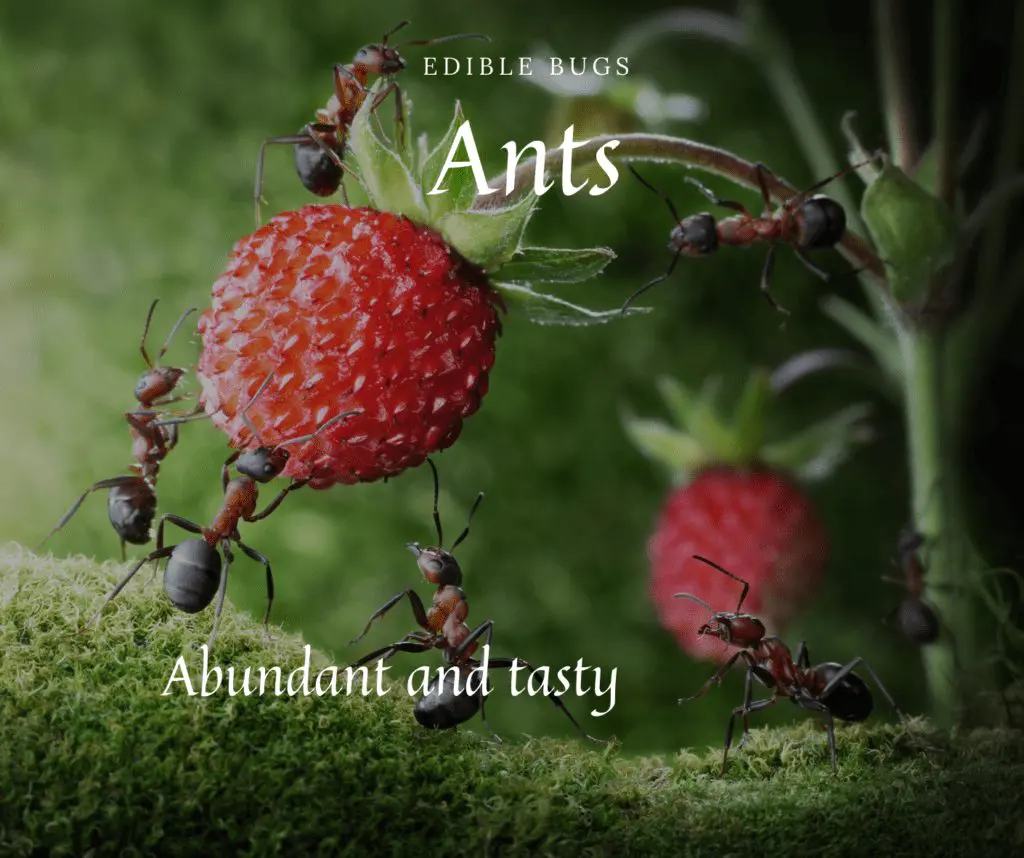
Edible Insects The Ant
Most ants are edible and actually taste pretty good in my opinion. They tend to have a bit of a sour flavor (something to do with an acid they produce under stress I believe) and taste good roasted with a little salt.
You can gather them in a number of ways, but one most often used is by allowing them to crawl onto a stick and shaking them off into a collection container. If you’re going to cook them by boiling you can simply shake them off into your cooking pot with the water in place.
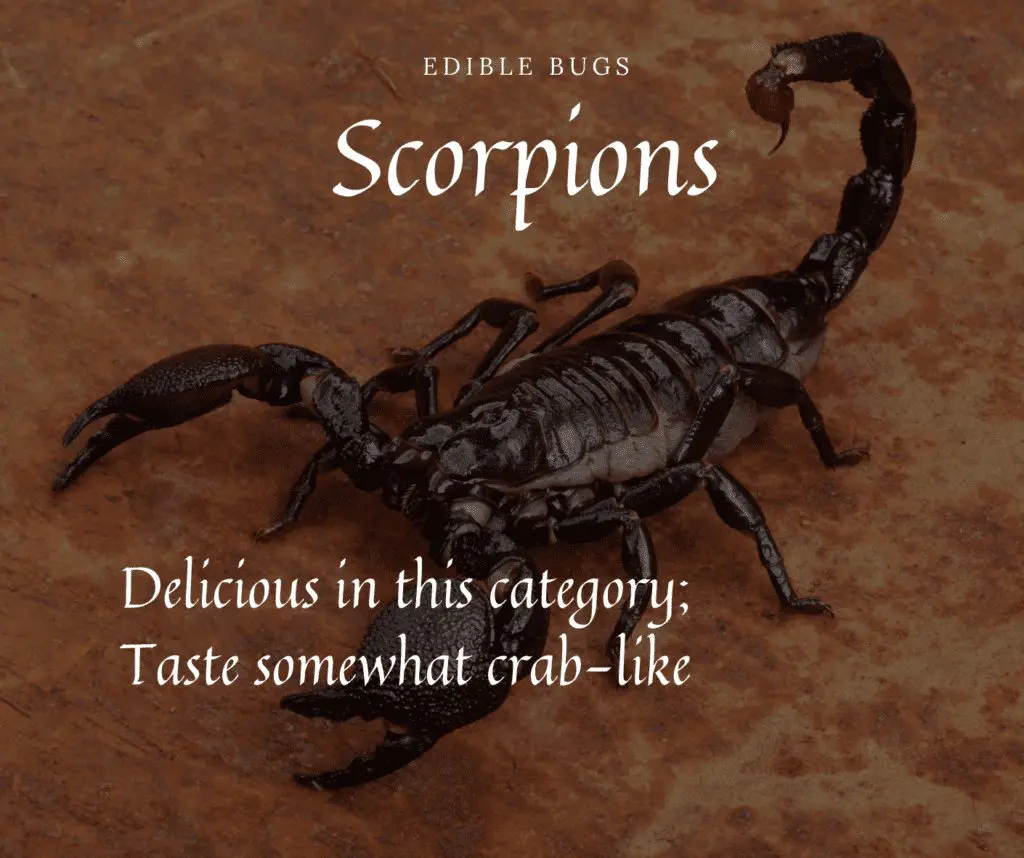
Edible Insects The Scorpion
This (sort of) crab tasting critter is a common treat in China street markets. An excellent desert survival food the scorpion can be prepared in a number of ways such as roasted, grilled, and even fried. Many recommend removing the end portion of the tail where the venom resides before consuming, however, the venom is neutralized during the cooking process. Still removing the poison helps in potentially reducing the chance of an allergic reaction to the venom.
As for gathering, they can generally be found close to the ground under rock overhangs and the like. Once you find one catching it is kind of self-explanatory…don’t get stung! Usher it into a container with a stick or other device allowing you to keep a safe distance from the stinger. Once you have it captive kill it and remove the venom portion of the tail (stinger and last two to three segments). Then cook it up and enjoy your desert crab cuisine.
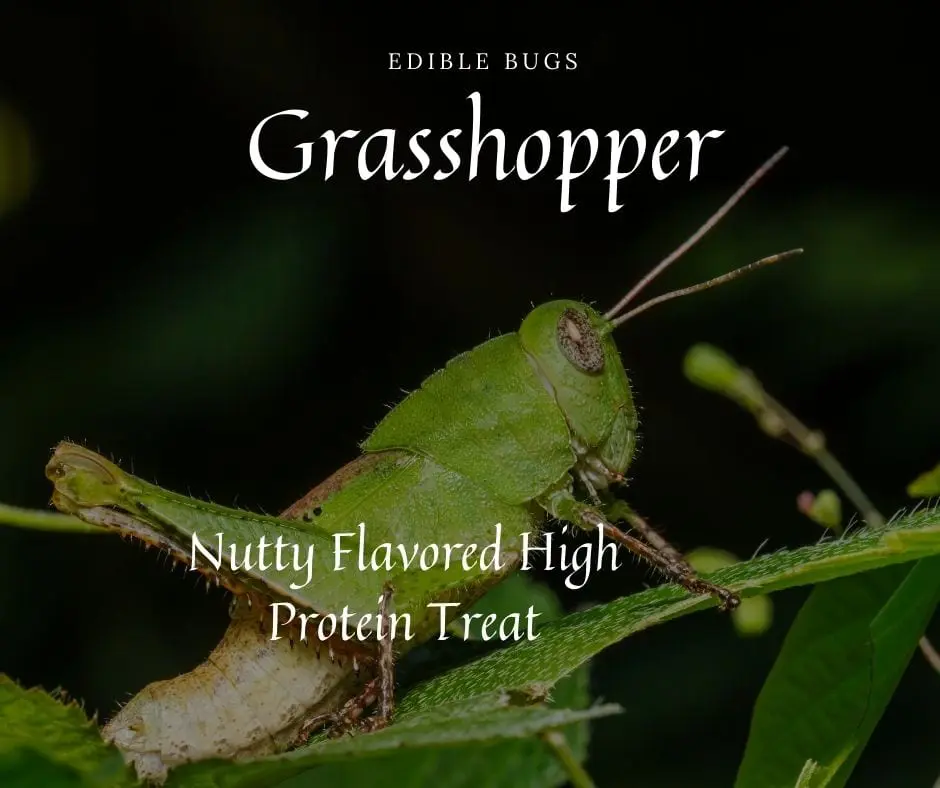
Edible Insects The Grasshopper
This is an abundant and more mainstream bug in the world of edibles (along with Crickets). Most grasshoppers are edible but not all. Avoid any brightly colored ones as some can make you sick. A good general rule in nature is that bright coloring represents danger, and it pans out here as well.
As for catching them, you can generally find them in tall grass and weeds and simply pluck them up by hand. You can also layout a nappy fabric (such as a wool blanket and scare them onto it. The material helps to tangle their feet slightly giving you a little time to grab them up. It’s best to go after them in the cool morning when they are slower to move and react.
As for cooking. Remove their head and internals with a pinch and pull (the guts are edible so don’t worry if they don’t all come out, we’re going to cook to reduce parasite risk anyway). Remove their wings and legs, don’t want a barb in the throat. Finally, roast them up for a nutty-flavored meal.
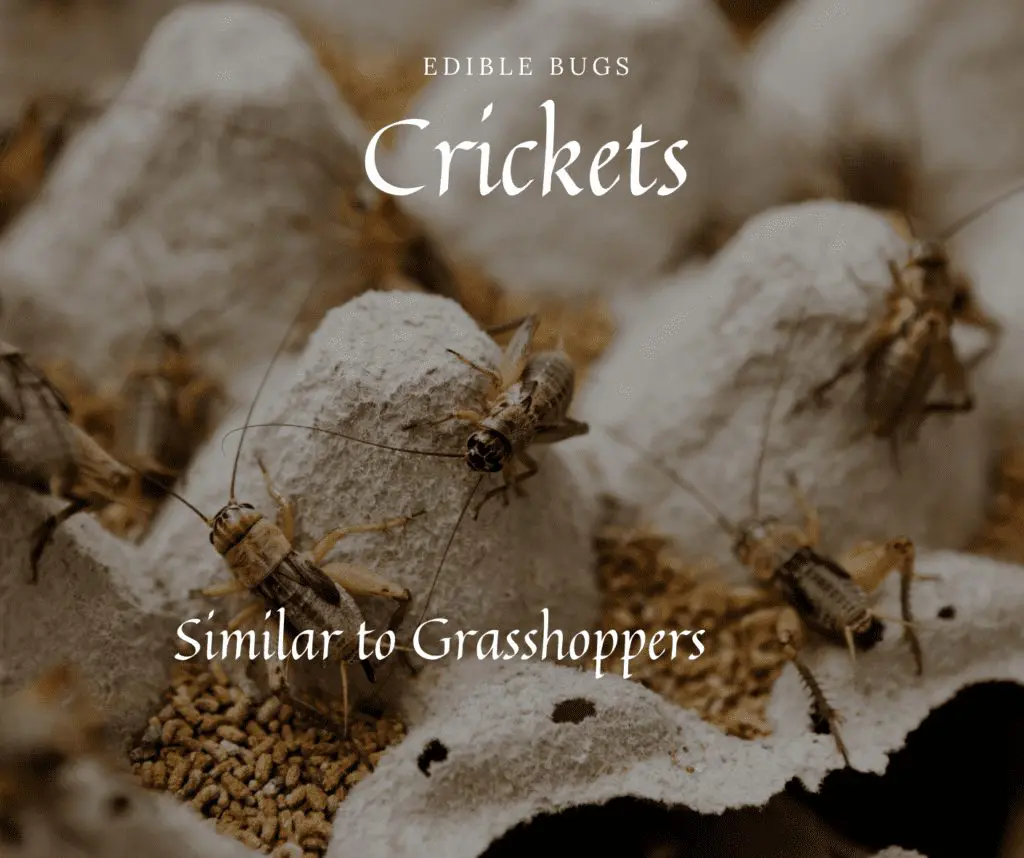
Edible Insects The Cricket
The Cricket is another more mainstream edible bug. In fact, Cricket Flour and Cricket Powder seem to be a relatively growing market for the insect world. For the most part, Crickets mirror the information above covering the Grasshoppers. The exception being the living habitat. You can also find crickets in cool, dark, and damp areas.
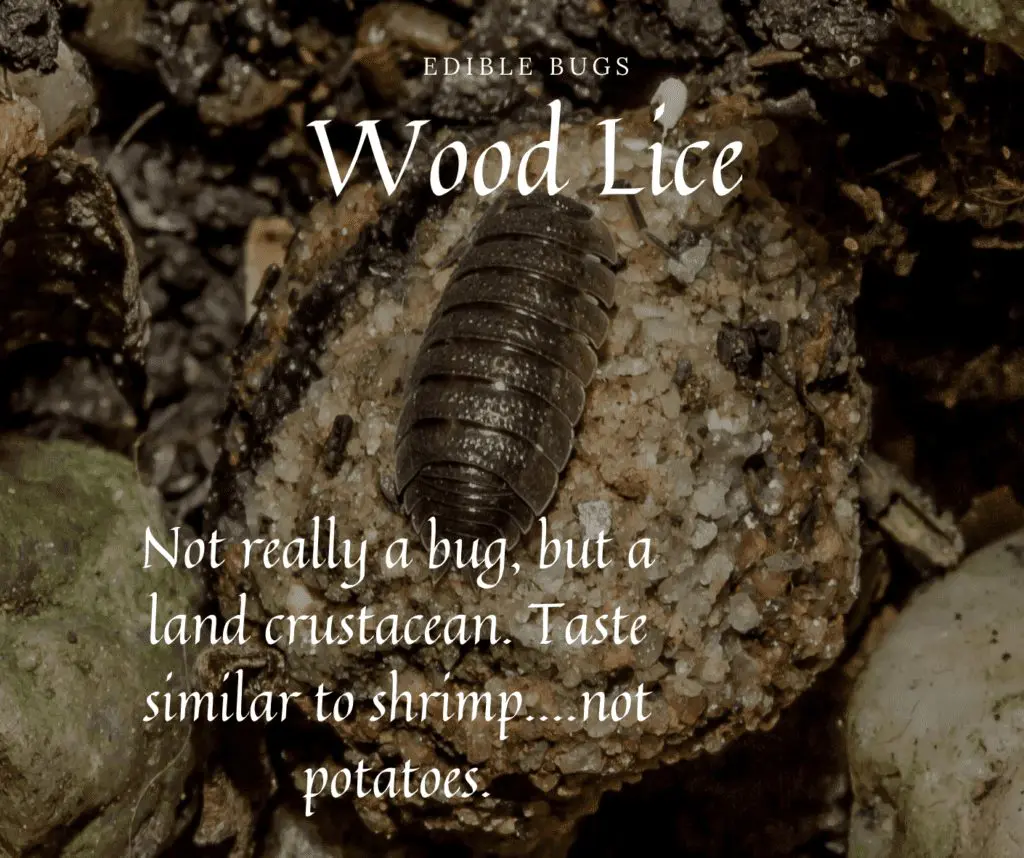
Edible Insects The Rolly Pollies
These childhood favorites go by a myriad of different names, such as pill bugs, sow bugs, woodlice, and probably many more I’m not aware of. I grew up calling them rolly pollies due to their defensive reaction to roll into a tight little ball when bothered.
It may surprise you to know they aren’t actually a bug, but rather a terrestrial crustacean. For that matter the only one in North America that I’m aware of. Staying in sync with their species theme their flavor is said to resemble that of a shrimp. This is one on the list I haven’t actually had the chance to eat yet but look forward to trying soon. Hey, maybe considering them a crustacean will help make them more palatable if needed. Think of them as tiny land shrimp free and plentiful for your next survival banquet.
As for gathering these little guys are a pretty easy catch. Most of us did it as kids at one time or another. Flip some rocks, look under debris and grab them up.
To prepare them you want to thoroughly boil them, making sure you kill off the parasites. Once they’ve been boiled awhile remove them from the water and eat up.
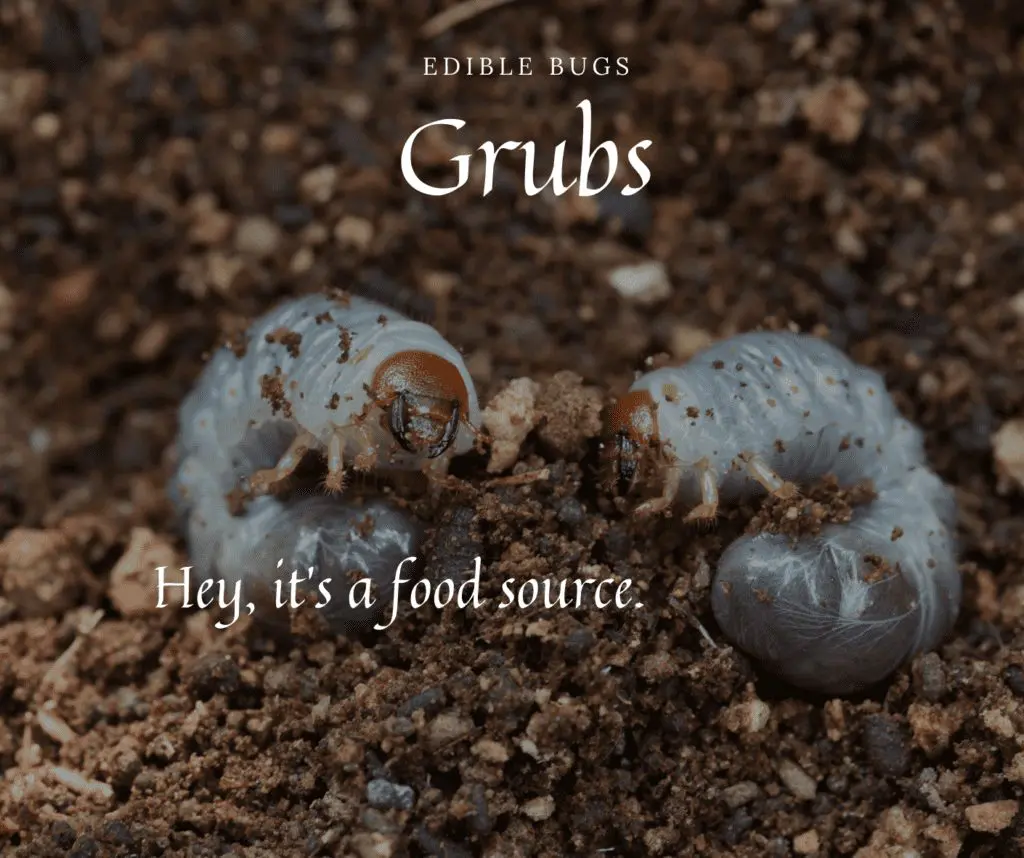
Edible Insects The Grub
Ahh, this one brings back memories for me. It was the year 2000 and I was going through SERE (Survival, Evasion, Resistance, and Escape) School at Fort Bragg, North Carolina. I was well into the training and hungry so I made a taco from Kudzu leaves and Grubs. It was as delicious as it sounds. I’d say it ranked right up there with the roadkill possum. Despite my personal experience and dislike of the little protein bars, they are an abundant and viable food source. There are also hundreds of varieties around the World and some are prized edibles in various cultures. So it is likely that some when prepared well actually taste pretty good. But, this article is about survival and if you’re starving taste should be your last consideration.
As for gathering these little squishy delights, it’s a relatively simple task. You can often find them hanging out in dead wood. Dig into it and you often find a number of them. You can also strip away live bark and find them, but I’ve never had to go that route as they are pretty abundant on the forest floor.
As to cooking the little gelatinous delicacies you can simply skewer and open flame roast them until the skin gets nice and crispy.
Edible Insects Conclussion
This has been a short little list of some of the more common insect edibles you can find here in the US, but this list isn’t even close to complete. All jokes aside insects are an excellent consideration as a survival food source, and one I’m surprised to see underutilized in hit survival shows. While the thought of eating bugs may seem disgusting to you now you should still spend a little effort familiarizing yourself with them as a food source and add it to your survival skillset. Like all things survival, it’s better to be prepared rather than reactive.
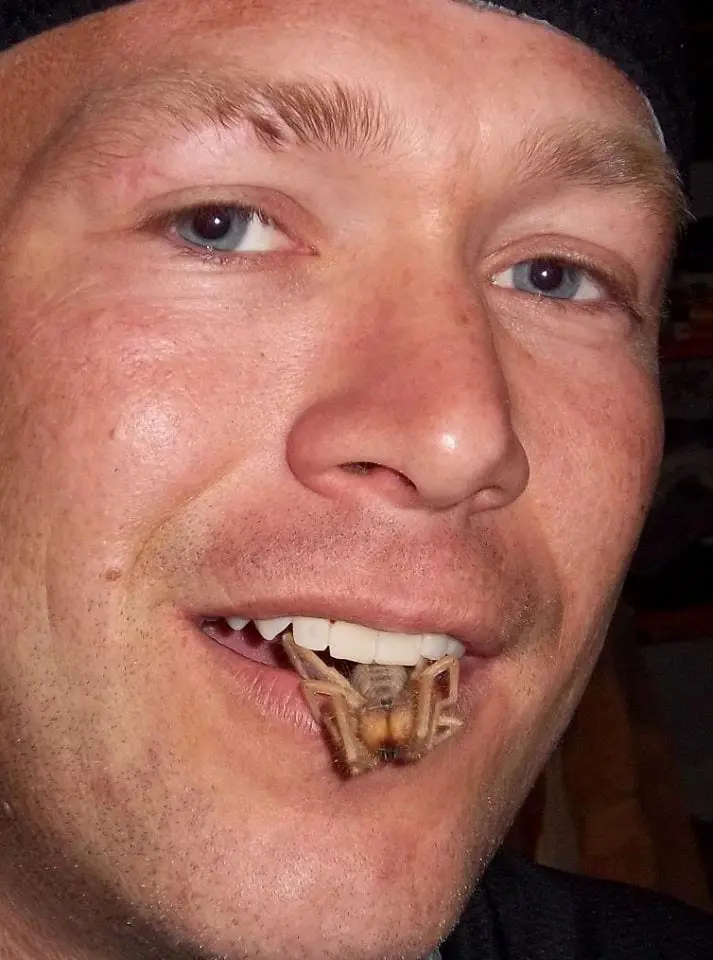
The Edible Insects Challenge
That brings me to the fun part of the article and a concept I intend to do more often with some of our material. A challenge. Reading and learning is great, but it is only a portion of the recipe for success. Here at the Modern Warrior Project, we’re all about success. Experience and practice is a key ingredient to that combination. So you guessed it.
I challenge you to eat a bug (or two). It can be store-bought or personally caught. Just spend the time to prepare it right and take all the proper precautions. Video it and share it on our #bugchallenge Channel by clicking the button below, pasting #bugchallenge in the box, and upload your video. Oh, and don’t forget to challenge a few of your friends as well!
Make sure and also spend some time checking out everyone’s videos and give them a thumbs up if you like it. I imagine these will be some fun ones to watch!
My commitment to you. As I write this I’m currently out of town working and unable to conduct the challenge myself, but within the next couple of weeks, I will, and I will post it.

